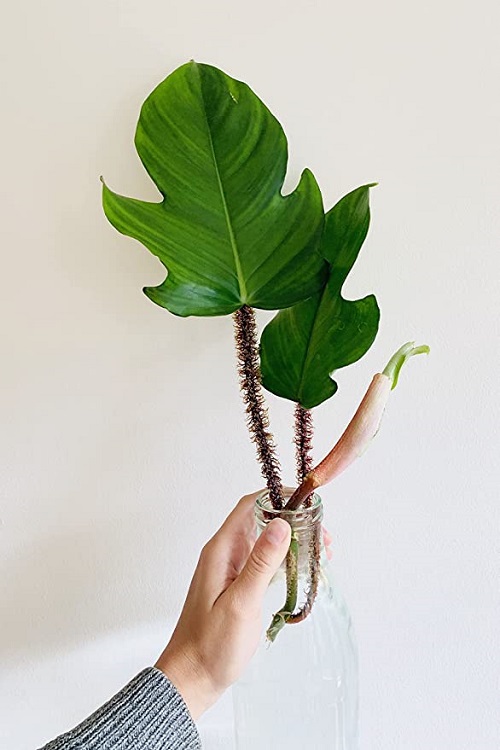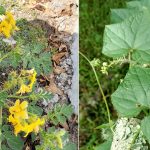With glossy, lobed foliage, Philodendron squamiferum adds a touch of tropical charm to any home. Grow yours with this exclusive care guide!
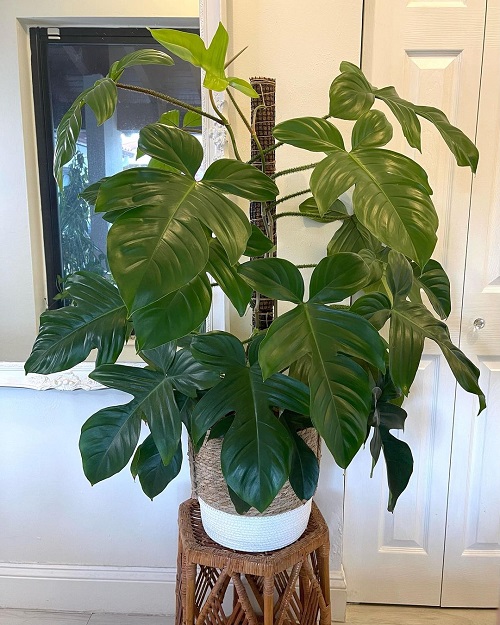
Highly prized species for its unique foliage and growth habit, Philodendron squamiferum, is not only visually appealing but also easy to care for, making it a great option for those looking to bring a touch of the tropical into their homes! Learn everything about Growing Red Bristle Philodendron Indoors!
- Botanical Name: Philodendron squamiferum
- Attains a height of 2-3 feet
- Prized for the intricate foliage texture
- Loves bright, indirect sunlight with high humidity
- Thrives in loose, well-draining medium
Philodendron squamiferum Profile
Philodendron squamiferum is a species of araceous plant that will captivate any indoor gardener with its long, slender, fuzzy stems adorned with glossy, five-lobed foliage lending a touch of tropical sophistication to any indoor setting.
Standing at the height of 2-3 feet, Philodendron squamiferum is an expert in adapting to an indoor environment and is known for its ability to thrive in a range of temperatures. As a versatile and adaptable species, the Red Bristle Philodendron is a must-have for any indoor garden enthusiast seeking to bring a touch of botanical elegance into their home.
Ideal Pot Size
Get a pot that is one size bigger than the root ball of the plant. Start with a 6-8 inches pot with enough drainage holes. You may transplant the houseplant to a one-size bigger container once you find the roots peeping out from the bottom.
Being a houseplant, Philodendron squamiferum accommodates pretty well in small containers, and it definitely is worth investing in showy pots to complement the plant’s handsome stature!
Propagating Philodendron squamiferum
Like most of its cousins, Philodendron squamiferum is best propagated via stem cuttings.
- Look for a healthy, mature stem that has at least two nodes. Cut the stem below a node, leaving a minimum of two leaves.
- Remove the lower leaves and dip the cut end into the rooting hormone to stimulate root growth.
- Fill a small pot with a well-draining potting mix, such as a mixture of peat moss, perlite, and bark. Moisten the potting mix before planting.
- Insert the cut end of the stem into the potting mix, ensuring that at least one node is covered. Firm the potting mix around the stem to secure it in place.
- Place a clear plastic bag over the pot to create a mini greenhouse and increase humidity. Make sure to provide adequate air circulation by propping the bag open slightly.
Keep the potting mix moist, and place the pot in bright, indirect light, avoiding direct sunlight, which can scorch the delicate new growth. New growth will sprout within 3-4 weeks.
Requirements for Growing Philodendron squamiferum
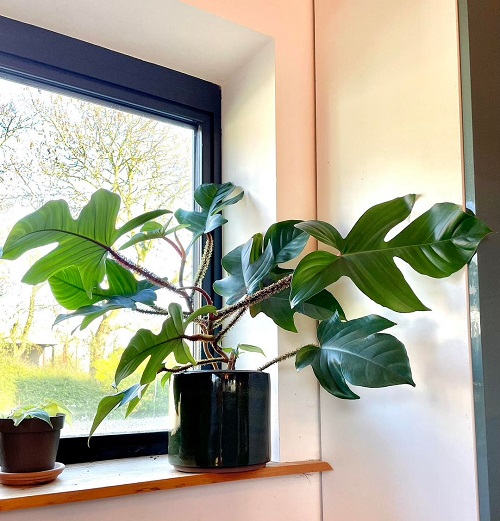
Light
The gorgeous philo thrives in bright, indirect sunlight. Place the plant near the north or eastern windows to let it bask in a few hours of the morning sun. Make sure not to expose it to the harsh afternoon sunlight as that might scorch the edges. Remember to hit the right balance and let the plant enjoy a bright spot in your living room!
Soil
Philodendron squamiferum thrives in well-draining soil that provides adequate aeration and moisture retention. A mixture of peat moss, perlite, and bark is ideal for this plant, as it allows for proper root development and growth.
Water
The plant loves to stay in an evenly moist medium that is not soggy. Water thoroughly, allowing it to drain away completely between the watering sessions. Over-watering is the best way to kill a Philodendron squamiferum, so better you avoid that.
Keep an eye on the top layer of the medium and do the needful, depending on your weather conditions.
Temperature & Humidity
Philodendron squamiferum is a tropical species that makes it suitable for growing in most indoor environments. It prefers temperatures between 60-85 F or 15-29 C and should not be exposed below 50 F or 10 C.
High humidity is crucial for the health and beauty of Philodendron squamiferum. This plant prefers humidity levels between 50-70% and can benefit from regular misting, especially in dry indoor environments. The use of a humidifier or pebble tray can also help to increase the moisture around the plant.
Philodendron squamiferum Care
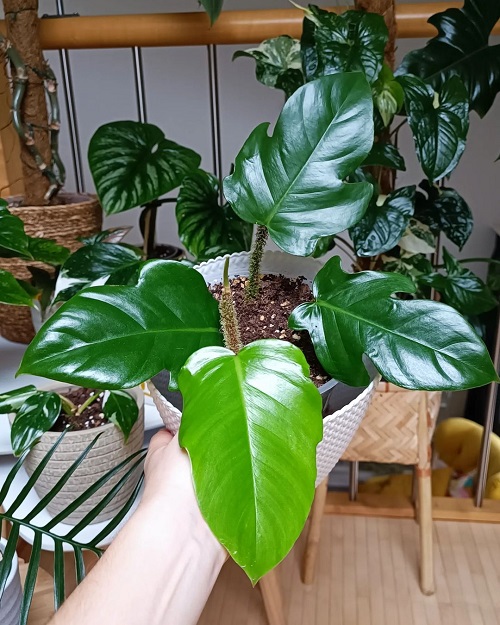
Fertilizer
Philodendron squamiferum does not require a lot of fertilizers. A balanced, water-soluble fertilizer should be applied every 3-4 weeks after diluting it to half its strength. During the winter months, the frequency of feeding can be reduced or discontinued.
Pests and Diseases:
Philodendron squamiferum is generally resistant to pests and diseases, but it can be prone to issues such as spider mites and mealybugs. Over-watering and poor ventilation can also lead to root rot, which is a common issue for this species. Spray the plant with an organic neem oil solution when such instances arise.

